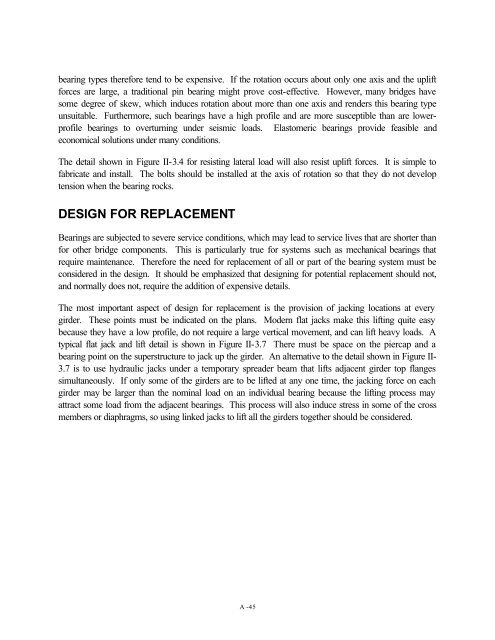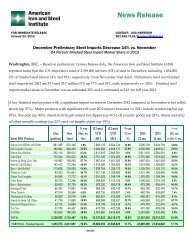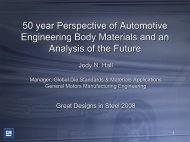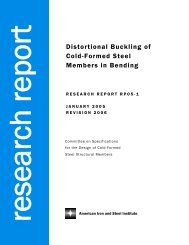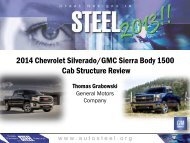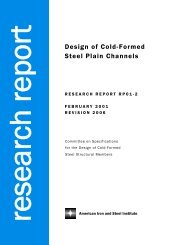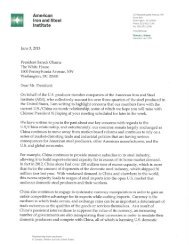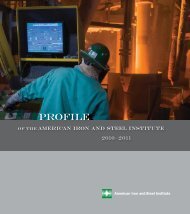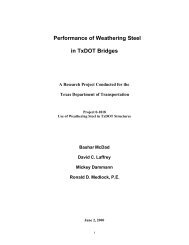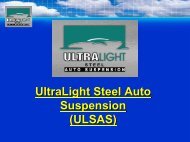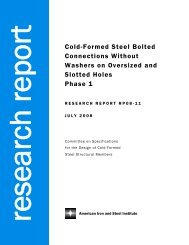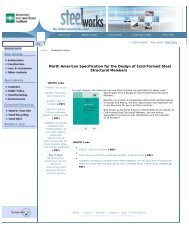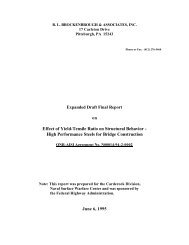Steel Bridge Bearing Selection and Design Guide (Part 3)
Steel Bridge Bearing Selection and Design Guide (Part 3)
Steel Bridge Bearing Selection and Design Guide (Part 3)
Create successful ePaper yourself
Turn your PDF publications into a flip-book with our unique Google optimized e-Paper software.
earing types therefore tend to be expensive. If the rotation occurs about only one axis <strong>and</strong> the uplift<br />
forces are large, a traditional pin bearing might prove cost-effective. However, many bridges have<br />
some degree of skew, which induces rotation about more than one axis <strong>and</strong> renders this bearing type<br />
unsuitable. Furthermore, such bearings have a high profile <strong>and</strong> are more susceptible than are lowerprofile<br />
bearings to overturning under seismic loads. Elastomeric bearings provide feasible <strong>and</strong><br />
economical solutions under many conditions.<br />
The detail shown in Figure II-3.4 for resisting lateral load will also resist uplift forces. It is simple to<br />
fabricate <strong>and</strong> install. The bolts should be installed at the axis of rotation so that they do not develop<br />
tension when the bearing rocks.<br />
DESIGN FOR REPLACEMENT<br />
<strong>Bearing</strong>s are subjected to severe service conditions, which may lead to service lives that are shorter than<br />
for other bridge components. This is particularly true for systems such as mechanical bearings that<br />
require maintenance. Therefore the need for replacement of all or part of the bearing system must be<br />
considered in the design. It should be emphasized that designing for potential replacement should not,<br />
<strong>and</strong> normally does not, require the addition of expensive details.<br />
The most important aspect of design for replacement is the provision of jacking locations at every<br />
girder. These points must be indicated on the plans. Modern flat jacks make this lifting quite easy<br />
because they have a low profile, do not require a large vertical movement, <strong>and</strong> can lift heavy loads. A<br />
typical flat jack <strong>and</strong> lift detail is shown in Figure II-3.7 There must be space on the piercap <strong>and</strong> a<br />
bearing point on the superstructure to jack up the girder. An alternative to the detail shown in Figure II-<br />
3.7 is to use hydraulic jacks under a temporary spreader beam that lifts adjacent girder top flanges<br />
simultaneously. If only some of the girders are to be lifted at any one time, the jacking force on each<br />
girder may be larger than the nominal load on an individual bearing because the lifting process may<br />
attract some load from the adjacent bearings. This process will also induce stress in some of the cross<br />
members or diaphragms, so using linked jacks to lift all the girders together should be considered.<br />
A -45


